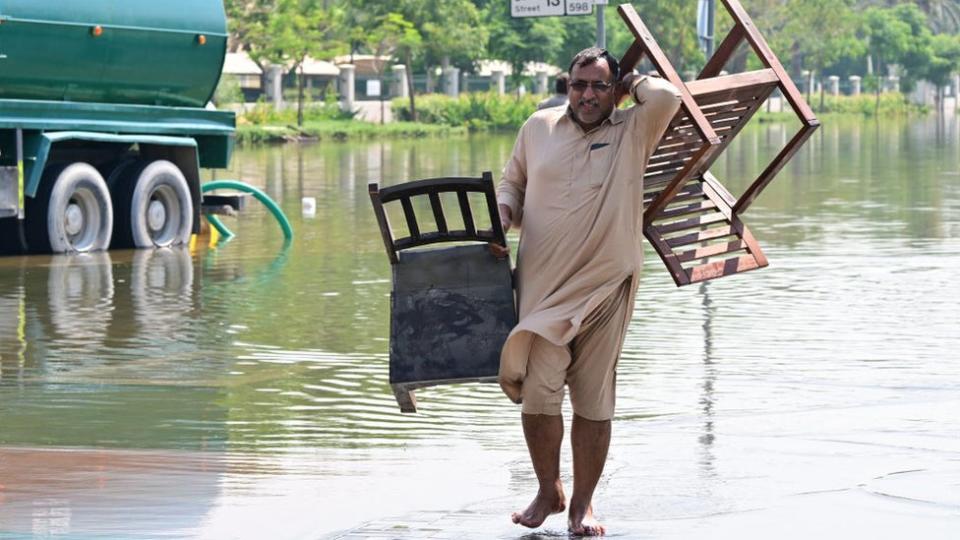Deadly Dubai floods made worse by climate change
Deadly storms that left Dubai under water and killed more than 20 people in Oman were likely made worse by climate change, scientists say.
Heat pumped into the atmosphere by humans made the record rainfall 10-40% heavier, they say.
But the natural weather pattern El Niño also drove the intense storms.
Scientists warn the link to climate change is not fully certain because the rarity of rainfall in the region gives them little data to work with.
The study was carried out by scientists with the World Weather Attribution group. The experts also said the way that cities have been built made the impacts of the storm worse.
In Dubai some areas recorded more than 250mm of rain in less than 24 hours, exceeding all records in daily rainfall in the 75 years since records began.
The country averages 140-200 mm of rainfall per year, while Dubai typically receives only 97mm. The monthly average for April is only about 8mm.
At least 20 people died in Oman and four in the United Arab Emirates when the storm hit on 15 April. Dubai International Airport, the second busiest in the world, was forced to cancel hundreds of flights.
It happened after months of hotter-than-average sea surface temperatures partly caused by El Niño - which is when warm waters rise to the surface of parts of the Pacific Ocean.
The higher ocean temperatures added more moisture to the atmosphere, making heavy rainfall more likely.
The scientists also concluded that cloud seeding - the manipulation of clouds to create more rain - did not have "significant influence" on the flooding.

Scientists internationally agree that climate change from burning coal, oil and gas is driving up global temperatures and causing more extreme weather including storms.
But it can be harder to say specific events, like a single storm, are caused by climate change because of variability in weather patterns.
To find out the answer, scientists look at years of information about weather in a place to identify trends. They also use computer models to compare a world without global warming to the world we live in now with 1.2C of warming since pre-industrial times.
Without lots of data, like rainfall information, it can be harder to see patterns and come to strong conclusions.
But the basic physics of global warming remain the same and indicate that a hotter atmosphere will create more powerful storms and rainfall, explains Professor Friederike Otto from Imperial College London.
"We are quite confident about the link to climate change. Studies by the IPCC (Intergovernmental Panel on Climate Change) show future increases in rainfall intensity in the region," she explained.
Prof Otto also said that this study was among the hardest done by the World Weather Attribution group because of gaps in data.
The way that cities have been built in the Gulf also made the impacts of the storm on humans more powerful, says Roop Singh from the Red Cross Red Crescent Climate Centre.
Cities built without adequate storm management combined with very dry soils in the region that struggle to absorb excess water means that 85% of people in UAE live in flood-prone areas.

